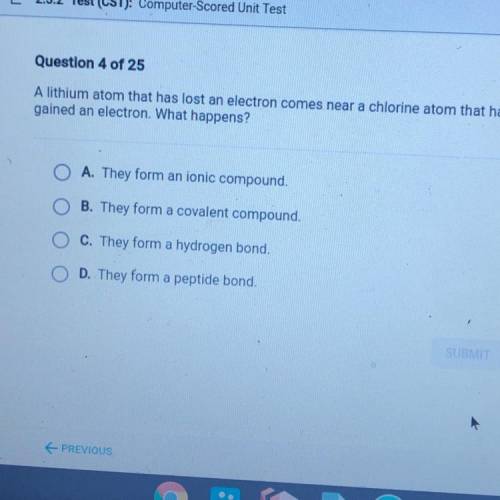Relative Rate of
Enzyme Action
10
Relative Rate of
Action
Enzyme A
5<...

Relative Rate of
Enzyme Action
10
Relative Rate of
Action
Enzyme A
5
0
0
0 10 20 30 40 50 60 70 80
0 10 20 30 40 50 60 70 80
Temperature (°C)
Temperature (*C)
Based on the results, what conclusion can be drawn about the action of the
enzymes as the temperature increases?
A. Enzyme A is a better catalyst at 70°C than enzyme B.
B. Enzyme A uses up all the substrate faster than enzyme B.
C. Enzyme B is useful for different reactions than enzyme A.
D. Enzyme A becomes less effective earlier than enzyme B.


Answers: 2


Another question on Biology

Biology, 22.06.2019 08:00
Biology ! the conversion of inorganic carbon to organic carbon by plants during photosynthesis is known as _[blank]_. filtration immigration reabsorption primary production
Answers: 1

Biology, 22.06.2019 10:30
If your client can successfully complete two or more repetitions above the desired repetition range in the last set in two consecutive workouts for any given exercise, the load should be depending on your client's current physical abilities. increased by 1-5% increased by 2-10% increased by 5-15% increased by 10-20% none of these
Answers: 1

Biology, 22.06.2019 13:00
What is the role of dna ligase in the elongation of the lagging strand during dna replication?
Answers: 1

Biology, 22.06.2019 15:10
When energy is used, atp molecules convert to adp molecules. this process is called
Answers: 1
You know the right answer?
Questions

World Languages, 10.01.2022 08:20



Mathematics, 10.01.2022 08:20


Mathematics, 10.01.2022 08:20


Mathematics, 10.01.2022 08:20


Computers and Technology, 10.01.2022 08:20

Computers and Technology, 10.01.2022 08:20

Mathematics, 10.01.2022 08:20


Mathematics, 10.01.2022 08:20


English, 10.01.2022 08:30

Computers and Technology, 10.01.2022 08:30

English, 10.01.2022 08:30


Business, 10.01.2022 08:30



